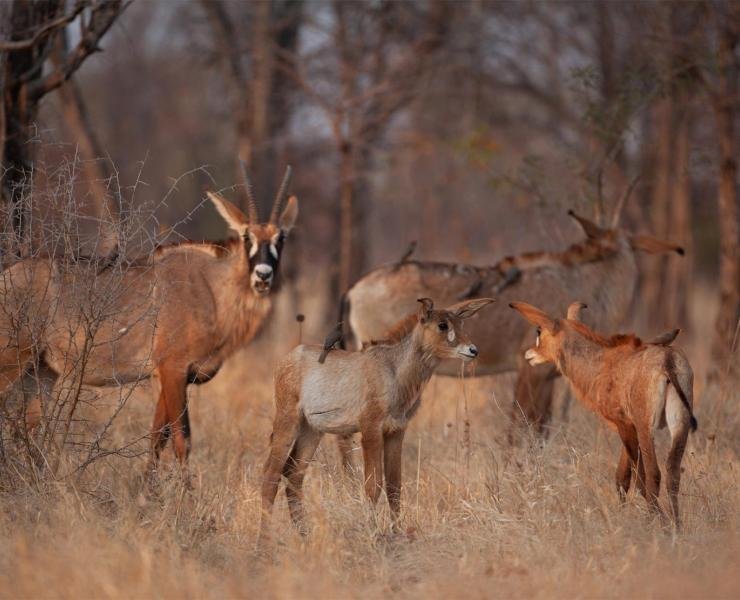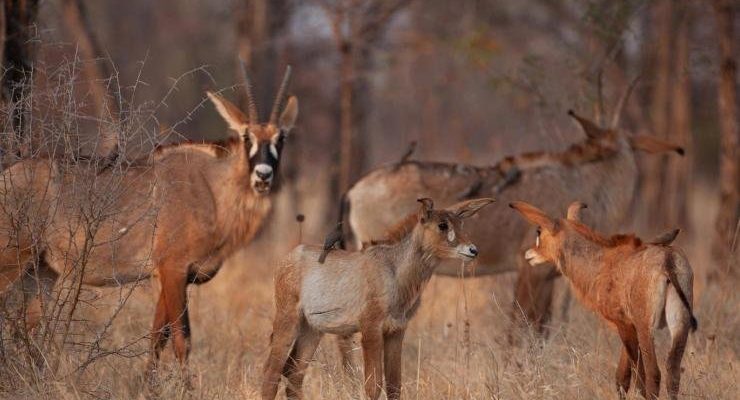
Roan antelopes are robust creatures that prefer the scrublands and savannas of West and Central Africa. They are known for their striking coats and long, pointed faces, which give them a distinct look. But beyond their good looks lies a fascinating story of resilience. Let’s dive deeper and explore how these beautiful animals adapt to some of the toughest conditions Mother Nature can throw at them.
Physical Adaptations for Survival
One of the most significant reasons roan antelopes can withstand harsh environments is their physical design. Their bodies are built for endurance, allowing them to travel long distances in search of food and water.
Firstly, their body size and shape play a critical role. Roan antelopes are quite large, typically weighing between 400 and 600 pounds. This bulk not only provides strength but also helps in thermoregulation. Their long legs allow for quick movement, enabling them to escape predators efficiently.
Additionally, the thick coat of roan antelopes is another key factor in their survival strategy. During hot days, their coat helps reflect sunlight and keeps them cool. Conversely, it provides warmth during the chilly evenings. This dual function makes them well-equipped for the varying temperatures in their habitat.
Camouflage and Coloration
The roan antelope’s coloration is not just for looks; it’s a smart survival tactic. Their reddish-brown fur blends perfectly with the savanna grasses, making it easier to hide from predators. This camouflage helps them stay unseen while they graze or rest.
Moreover, their lighter underbelly provides an optical illusion when viewed from below, where predators usually attack. You might be wondering how effective this is. During sunrise or sunset, when the light is low, roan antelopes are nearly invisible against their backdrop, giving them a crucial edge in the wild.
Water Conservation Techniques
Water is the lifeblood of any living being, especially for animals in dry regions. Roan antelopes are experts in water conservation, which is vital for their survival in harsh environments.
One strategy is their ability to consume moisture-rich plants. These antelopes have a diet that primarily consists of grass, leaves, and other vegetation, many of which contain significant water content. By eating these plants, they can obtain hydration without relying solely on drinking.
Additionally, roan antelopes are known to travel long distances in search of water sources. They have impressive memories, allowing them to remember locations of water holes and past grazing grounds. It’s quite amazing how nature equips these animals with such remarkable abilities!
Efficient Digestive System
Their digestive system is another design marvel that aids in survival. Roan antelopes have a specialized stomach that helps them break down tough plant fibers efficiently. They are ruminants, meaning they chew their food, swallow it, and then regurgitate it to chew again. This process, known as cud chewing, allows them to extract maximum nutrients from the vegetation they consume.
This efficient digestion means they require less food than smaller herbivores, making it easier to thrive in areas where food can be scarce. Honestly, it’s like having a built-in meal recycling system—what a clever adaptation!
Social Behavior and Group Dynamics
Social behavior plays a huge role in how roan antelopes survive in the wild. They are not loners; they thrive in small groups, typically called herds. This social structure offers several advantages.
First, living in a herd helps with protection against predators. When a group of roan antelopes senses danger, they communicate through body language and vocalizations. The herd will often stay close together, making it harder for predators to single out an individual.
Additionally, these social structures allow for better foraging. Group members can help each other find food and water, sharing information about the best spots to graze. With collective knowledge, they increase their chances of survival.
Communication and Alert Signals
Roan antelopes have developed effective communication methods. Their physical postures and vocalizations help signal alarms when danger is near. For example, if one detects a predator, it might raise its head high, alerting the rest of the herd to stay vigilant.
Their communication methods also include specific calls that indicate various types of threats. This helps the herd react quickly. It’s fascinating to think about how these animals understand each other on such a deep level, working together to stay safe.
Adaptation to Seasonal Changes
Seasons can dramatically affect the environments that roan antelopes inhabit. They have adapted to these seasonal changes in food availability and climate, demonstrating their resilience.
For instance, during the dry season, food becomes scarcer. Roan antelopes may migrate to areas with more abundant resources. Their understanding of the landscape and seasonal patterns helps them find better habitats when the need arises.
They also adjust their activity levels based on the temperature. During the hottest parts of the day, they often rest in the shade, avoiding the sun’s harsh rays. This behavior conserves energy and ensures they remain healthy and alert for when nighttime falls.
Reproductive Strategies
Another aspect of their survival strategy lies in their reproductive behavior. Roan antelopes typically give birth to one calf at a time, which allows them to focus on raising their young in challenging environments.
Mothers often hide their calves in dense cover shortly after birth, preventing predators from easily spotting them. This protective behavior helps improve the calf’s chances of survival during its vulnerable early months.
Once the calves are old enough, they join the herd, learning crucial survival skills from their mothers and other group members. It’s a beautiful cycle of life, showcasing the importance of community and support.
Roan antelopes are a perfect example of how nature’s design allows for survival under the harshest conditions. From their strong bodies and efficient digestive systems to their social structures and communication skills, every part of their existence is tailored for resilience.
These magnificent creatures remind us of the beauty and complexity of the natural world. As they navigate the challenges of their environment, they exemplify adaptability, proving that survival is not just about being tough, but also about being smart and connected. Next time you think about the wild and its inhabitants, remember the roan antelope and their incredible journey through the harsh terrains of Africa.

